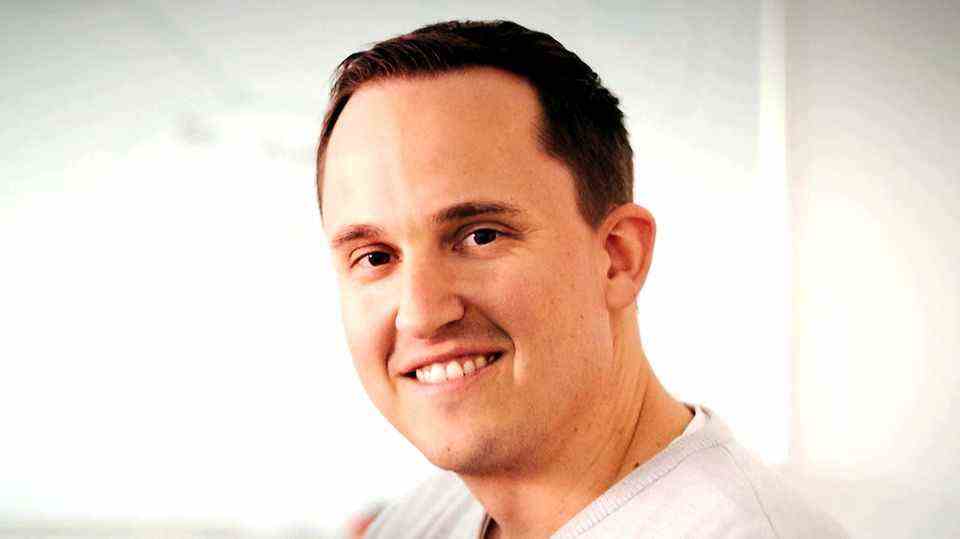Dominik Roth is a headhunter at an international personnel consultancy. In an interview, he explains what even top managers do wrong on Xing and LinkedIn – and what anyone can do to be found by talent scouts.
Mr. Roth, your job title sounds pretty impressive. But what does a headhunter actually do all day? Sitting in front of the screen and clicking through Xing and LinkedIn?
First of all I want to dispel the common misconception that as headhunters we are responsible for finding jobs for others. It’s the other way around: companies hire us to find someone for a specific position. When searching, we then use various sources, including Xing and LinkedIn. We have special research teams for this. As a senior consultant, I come into play when it comes to selecting and approaching potential candidates.
Who are your clients?
Most headhunters specialize in specific industries or professional groups. I’m responsible for the technology area, especially for so-called “hidden champions”. These are often little-known companies from industrial medium-sized companies that are market leaders in their field and need special people.
And what kind of heads are you chasing?
We specialize in top management. In headhunter jargon, this means C-level, i.e. CEO, CFO, COO. We are therefore looking at the level of the managing director and one to a maximum of two floors below.
This is a very exclusive field. How exactly does a search like this work?
A specific example: I was recently approached by an S-Dax company that was looking for a head of operations below management level. The task was to find someone who works in a similar industry environment and knows the processes. First of all, we define a profile together with the customer, consider what is realistic and what requirements could be dispensed with if necessary. Then, as a first step, our research team searches for target companies. And only in the second step to the search for candidates within these companies.
What distinguishes the Xing or LinkedIn profile of a top manager from that of a normal person? Can you take a look there?
Rather the opposite. I have the impression that young academic specialists often position themselves better on Xing and LinkedIn than the top level. Managers sometimes try to assume a kind of influencer status instead of providing specific information about the person. Then there is a profile slogan like “Make the world a better place”. That doesn’t help me further to assess the person and is not particularly conducive to being approached.
What is generally beneficial to stand out in the sea of Xing and LinkedIn profiles and to be discovered by talent scouts?
The most important thing is discoverability. Most people think you can find me somehow, but how? If we headhunters don’t get any further with the candidate search via companies, we use the so-called Boolean search. This means that we use the free text search on Xing or LinkedIn to search for specific keywords. Anyone who wants to be found by a headhunter must therefore also have these keywords in their profile.
What magic words are these and where do you write them?
Function titles are important, but so are industry-specific keywords. Xing and LinkedIn have fields for skills and knowledge where I can enter free keywords. Important technical terms must appear there. This can be “forecasting” for a controller, “supply chain” for the head of operations, “SAP” for an IT specialist. In this way, you can be found directly based on the skills you bring with you. The biggest mistake is to just upload your CV and think something is going to happen.
What do you look for once you’ve landed on a profile?
The professional stations should be fully and meaningfully described. This includes not only the position, but also what responsibility you had and what you did there. What many neglect is: talking about successes. Managed this project, acquired those customers. Make numbers, data and facts transparent as far as possible. This is how you stand out from others.
And what information can you safely leave out?
Please no soft skills. First of all, no one searches for it via keyword search. Secondly, everyone likes to attest that they are empathetic and team-oriented or that they think entrepreneurially. That doesn’t help me, that’s a waste of space.
Is it important to state that I’m open to offers?
I personally don’t care. I address anyone who is interesting to me. Even if someone isn’t looking, I try to win them over to the task. A good headhunter doesn’t reach for the “low hanging fruits”.
But you’re not only looking in business networks on the Internet, are you?
Right. You can find a lot of people on Xing and LinkedIn, but not everyone. And some don’t respond to inquiries there either. It is therefore also our job to make calls to companies in order to get candidates directly on the phone. This usually happens under a pretext, the tactic is called Cover Story Ident.

You are in a top business league. How many candidates do you cast for a job?
In the first serve we target 100 to 200 people. Of course, the higher the position, the thinner this can get. We use this to make a long list of eight to twelve candidates who we ask if they can imagine it. In consultation with the customer, this is then used to create a short list of people who will come to the actual job interview. We often also subject these candidates to special management diagnostics with a personality test, cognitive performance test and in-depth interview.
Sounds like a complicated procedure. How does someone who is already a boss react when you tell them that they still have to go through various rounds of applications and do a psychological test with you?
There are actually top managers who don’t realize that they are just one of several candidates, although they should know better. But most candidates are less bothered by taking an assessment with us. They find it rather good that there is someone who structures and moderates the process. What the applicants see less if they still have to have umpteen rounds of talks with umpteen people in the target company just because everyone there wants to be involved for internal political reasons. Ideally there is a decision-making body, two to three discussions and that’s it.
What arguments do you use to lure a person who is already in a top job? Even more salary, even bigger company car or are those other things?
It’s not often the promotion to an even more prestigious position that triggers my candidates. This is more about the content of the task, about creative freedom or about a mission that needs to be implemented as a manager.


